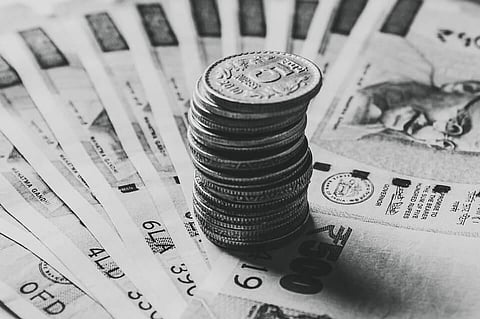
- Home
- न्यूजग्राम
- NewsGram USA
- India
- World
- Politics
- Entertainment
- Culture
- Lifestyle
- Economy
- Sports
- Sp. Coverage
- Misc.
- NewsGram Exclusive
- Jobs / Internships

Not all nations have handled the coronavirus outbreak with the same measure of efficiency, with India's chaotic lockdown and confused messaging creating significant uncertainty about the region's short and medium-term future.
According to the American brokerage firm Goldman Sachs, the Indian economy is subsequently expected to contract by 5% in the financial year 2021, representing the nation's worst ever performance in this respect.
Despite this sustained economic decline, the Indian Rupee has fluctuated wildly during the last couple of weeks. But why is this the case, and what's the long-term outlook for this emerging currency?
Unsurprisingly, the Indian Rupee edged lower during the first week of May, pairing back some of the gains that it made since its initial crash in March (when the lockdown was first announced at incredibly short notice).
The INR has also enjoyed brief periods of growth against the USD more recently. Pixabay
This depreciation came after the INR actually made gains of 0.3% against the greenback at the end of April, capping three consecutive weeks of modestly rising sentiment for the INR/USD.
This decline came against the backdrop of an increasingly negative economic outlook, with agencies such as the International Monetary Fund (IMF) and World Bank providing decidedly downbeat forecasts for medium and longer-term growth.
However, the INR has also enjoyed brief periods of growth against the USD more recently, as it began to incrementally recoup losses and trade within a far wider range. This was largely attributed to better-than-expected Chinese export data, but this trend will not necessarily be sustained over time.
The most recent rise in the performance of the INR also highlighted a slight increase in the market's appetite for risk, with traders leveraging platforms such as Oanda to track daily price shifts and profit directly from these as the global sentiment improves incrementally against a backdrop of falling Covid-19 cases.
The INR remains a currency to avoid for risk-averse traders, however, particularly as a growing fiscal deficit and increased quantitative easing measures in India continue to restrict growth and devalue the rupee considerably.
The most recent rise in the performance of the INR also highlighted a slight increase in the market's appetite for risk Pixabay
This, combined with rising daily volatility and a slight increase in demand, will definitely divide opinion in the forex market depending on each trader's unique outlook and overall investment philosophy.
These factors also combine to create an increasingly negative long-term outlook, especially for the remainder of 2020.
Make no mistake; as quantitative easing continues and the base interest rate in India remains noticeably low, the value of the INR will depreciate incrementally over time while experiencing a significant shortage in demand.
